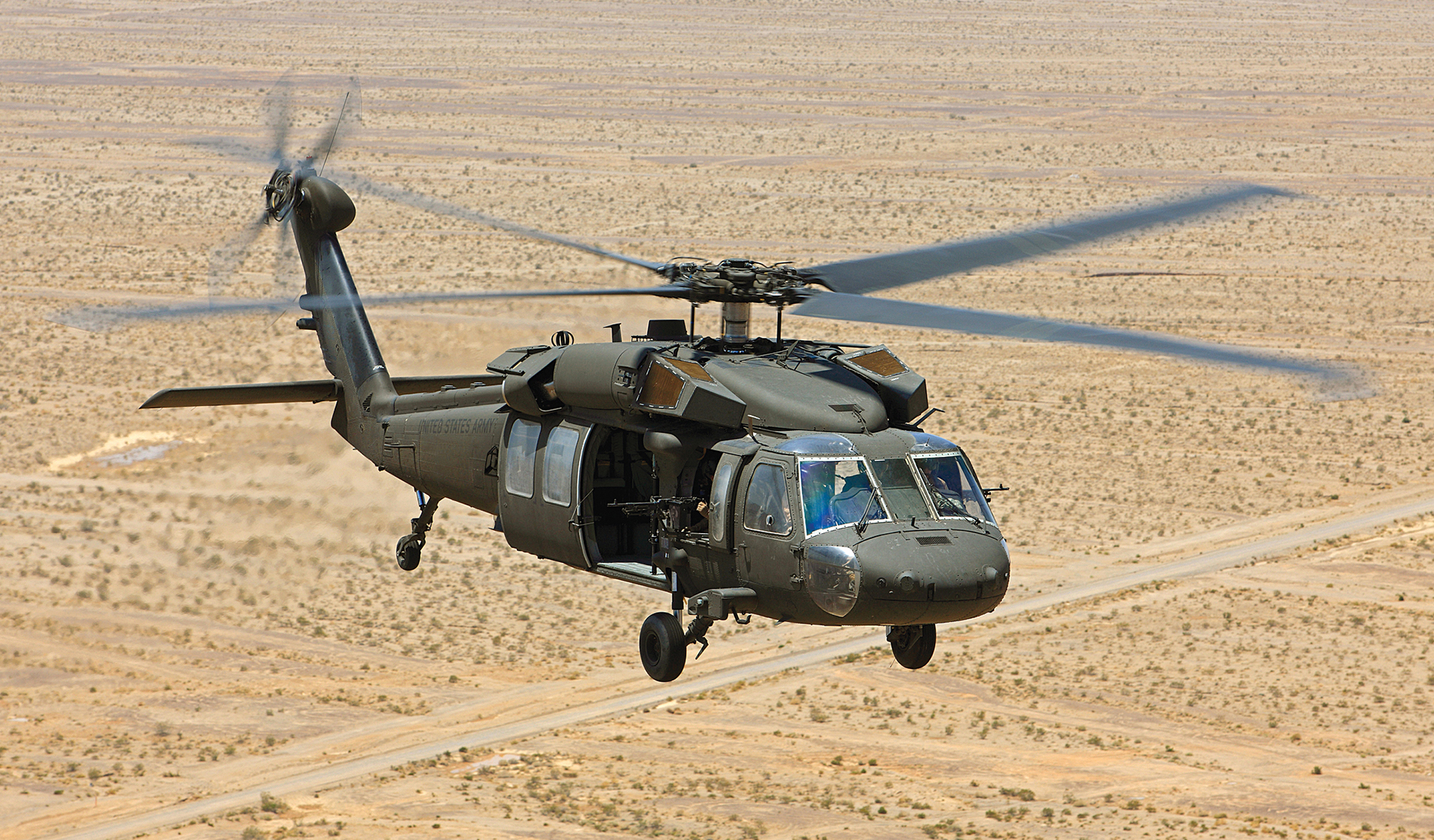Achieving Excellence: Key Techniques for UH 60 Helicopter Maintenance
Achieving Excellence: Key Techniques for UH 60 Helicopter Maintenance
Blog Article
Understanding the Mechanics and Design Behind Uh 60 Helicopters
The UH-60 helicopter, frequently called the Black Hawk, stands as a peak of contemporary rotorcraft modern technology, symbolizing a mix of robust design and elaborate technicians. From its creation to its existing iterations, the advancement of this aircraft showcases a combination of innovation and functionality. As we peel off back the layers of the UH-60's design, a globe of intricate systems and careful design comes to light. Comprehending the technicians and engineering behind this flexible airplane unveils a realm where accuracy fulfills power, and where each component plays a vital role in accomplishing trip.
Background of UH-60 Helicopters
The background of UH-60 helicopters traces back to the late 1970s when the United States Army sought a functional and innovative utility helicopter to change its aging fleet. In action to this need, the Sikorsky Airplane Firm established the UH-60 Black Hawk helicopter. Introduced in 1979, the UH-60 promptly came to be a staple in armed forces procedures as a result of its excellent capabilities.
The UH-60 was made to master a variety of goals, including troop transportation, medical emptying, digital war, and special procedures. Its capability to adapt to various roles made it a beneficial possession to the united state Army and various other military pressures around the globe
For many years, the UH-60 platform has actually gone through numerous upgrades and variations to boost its performance and maintain rate with progressing goal demands. These helicopters have actually seen comprehensive solution in conflicts such as the Gulf War, Afghanistan, and Iraq, showcasing their integrity and flexibility in varied operational atmospheres. The UH-60's abundant background is a testament to its long-lasting heritage as a premier utility helicopter.

Engine and Power Systems
Making use of sophisticated propulsion innovation, UH-60 helicopters are geared up with advanced engine and power systems to make certain ideal performance and dependability in a variety of functional situations. The UH-60, typically called the Black Hawk, is powered by 2 General Electric T700-GE-701D engines, each capable of supplying up to 1,940 shaft horsepower. These turboshaft engines give the needed thrust for the helicopter to execute its missions successfully, including army transport, medical evacuation, and battle assistance.

Rotor System and Aerodynamics
How do the rotor system and the rules of aerodynamics of UH-60 helicopters add to their operational performance and flight capacities? The blades system of the UH-60 helicopter plays a crucial function in offering lift and propulsion. The UH-60 features a four-bladed, completely verbalized blades system that permits for high maneuverability and security throughout flight. This design allows the helicopter to do a wide variety of objectives, from transport and medical discharge to fight procedures.
Aerodynamics likewise play an essential function in the efficiency of UH-60 helicopters. The structured fuselage and rotor blade layout decrease drag, allowing the helicopter to achieve higher speeds and much better gas performance. The wind resistant design of the UH-60 also adds to its ability to run in varied environmental problems, including high elevations and hot temperature levels.
Avionics and Flight Control Equipment

In its detailed control with the blades system and the rules of aerodynamics of UH-60 helicopters, the avionics and trip control systems form a crucial network of innovations forming the aircraft's functional capacities. In the UH-60, these systems consist of electronic display screens, interaction radios, General practitioner navigating, climate radar, and autopilot systems.
The trip control systems of the UH-60 are liable for equating the pilot's inputs right into the appropriate changes to the rotor system, guaranteeing stable flight and maneuverability. These systems include hydraulic actuators, servos, and computers that interact to manage the tail and primary blades, as well as other flight control surface areas. By precisely managing the helicopter's trip characteristics, these systems enable pilots to execute a broad variety of goals, from transportation and search-and-rescue to battle operations, with precision and confidence.
Role and Applications in Aviation
Avionics systems in UH-60 helicopters incorporate a range of digital systems that aid in navigation, communication, monitoring, and regulating numerous aircraft features. These systems include digital display screens, auto-pilot systems, interaction radios, GPS navigation equipment, and weather radar. Additionally, look at this now these systems incorporate safety features such as auto-pilot modes, terrain awareness advising systems, and stability enhancement systems to improve the total safety and security and functional capacities of the UH-60 helicopters in various objectives, including army transport, clinical evacuation, search and rescue, and airborne firefighting.
Conclusion
In conclusion, the UH-60 helicopter is a flexible aircraft with an abundant background and advanced design. Its engine and power systems, rotor system, the rules of aerodynamics, avionics, and flight control systems all function with each other to make it a trustworthy and efficient equipment.
In its elaborate control with the blades system and aerodynamics of UH-60 helicopters, the avionics and trip control systems create an important network of innovations forming the aircraft's operational abilities.The trip control systems of the UH-60 are liable for translating the pilot's inputs into the proper changes to the blades system, making sure secure trip and ability to move. Avionics systems in UH-60 helicopters encompass a variety of electronic systems that aid in Read More Here navigating, interaction, surveillance, and regulating numerous aircraft features. Additionally, these systems incorporate safety features such as autopilot modes, terrain awareness cautioning systems, and stability augmentation systems to enhance the overall safety and operational capabilities of the UH-60 helicopters in numerous goals, consisting of army transportation, medical emptying, search and rescue, and home aerial firefighting.
Its engine and power systems, rotor system, the rules of aerodynamics, avionics, and trip control systems all function together to make it a reputable and effective device.
Report this page